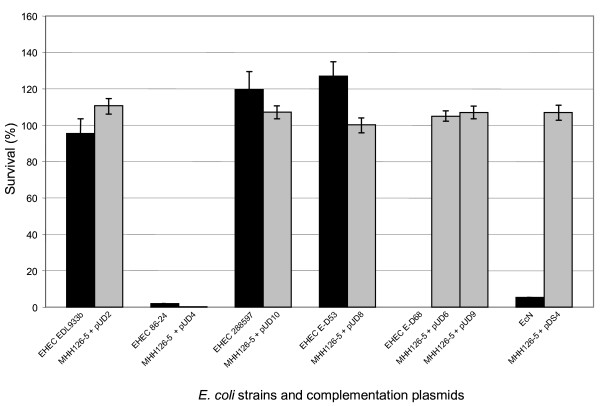Figure 2.

Functional analysis of further rpoS genes by complementation of E. coli MHH126-5. This figure shows resistance data of the rpoS deletion mutant E. coli MHH126-5 complemented with each of the plasmids pUD2 (pBR322 + rpoSEDL933b), pUD4 (pBR322 + rpoS86-24), pUD10 (pBR322 + rpoS288597), pUD8 (pBR322 + rpoSE-D53), pUD6 (pBR322 + rpoSE-D68), pUD9 (pBR322 + rpoSE-D68) or pDS4 (pBR322 + rpoSEcN) in comparison to the corresponding wild type EHEC strains EDL933b, 86-24 and 288597, STEC isolates E-D53 and E-D68 as well as EcN. All wild type strains are indicated by black bars, the complemented mutants by grey ones. Plasmids pUD2 and pUD4, pUD10 and pUD8 conferred an acid resistance phenotype to the mutant, which was comparable to the corresponding parental strain. Interestingly, upon complementation with pUD6 and pUD9, bearing the rpoS gene of STEC E-D68, E. coli MHH126-5 became strongly pH resistant. This was in sharp contrast to the behavior of the STEC E-D68 wild type strain. A similar phenomenon was observed when the acid resistance test strain E. coli MHH126-5 was complemented with pDS4 containing rpoS of EcN. The means and standard deviations were calculated from three independent dilution series in this exemplary experiment.
